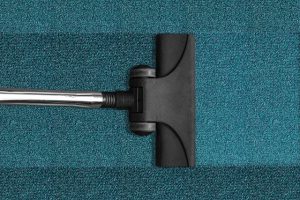Dealing with dog urine stains and odors can be a challenging task. Discover the most effective techniques to remove stains and neutralize odors from carpets, upholstery, and other surfaces in this comprehensive guide.
Why is Dog Urine So Stubborn?
Dog urine can be one of the toughest stains to remove, leaving behind a strong odor and unsightly discoloration. This is because dog urine contains a variety of different compounds, including proteins, hormones, and ammonia. These compounds can create a strong, persistent odor that can linger long after the urine has been cleaned up.
Additionally, dog urine can be difficult to remove because it can seep deep into carpets, upholstery, and other porous surfaces. When urine is absorbed into these materials, it can be difficult to reach and remove all of the urine molecules. This can cause the odor to return over time, even after seemingly thorough cleaning.
Furthermore, if left untreated, dog urine can also cause permanent damage to some surfaces. For example, if urine is left on hardwood floors or furniture, it can cause discoloration and even warping over time. This is because the acidity in the urine can break down the surface of the wood.

A frustrated homeowner trying to clean a dog urine stain from a carpet.
The Power of Enzymatic Cleaners
Enzymatic cleaners are one of the most effective solutions for removing dog urine stains and odors. These cleaners work by using enzymes to break down the compounds in urine, eliminating the source of the odor and discoloration.
Unlike traditional cleaning products, enzymatic cleaners are specifically designed to target the proteins and other compounds found in urine. These enzymes work by breaking down the molecular bonds that hold the urine molecules together, effectively eliminating the odor and stain.
Enzymatic cleaners are also safe to use on a variety of surfaces, including carpets, upholstery, and hardwood floors. This is because they don't contain harsh chemicals that can damage these materials over time. Instead, enzymatic cleaners use natural ingredients to break down the urine molecules, leaving behind a fresh, clean scent.
Another benefit of enzymatic cleaners is that they can help prevent future accidents. Because they break down the compounds in urine, they can eliminate the scent that dogs use to mark their territory. This means that dogs are less likely to return to the same spot to urinate again, helping to prevent future accidents.
Can DIY Solutions Really Work?
While there are many DIY solutions out there for removing dog urine stains and odors, their effectiveness can vary widely depending on the situation. Some DIY solutions, such as vinegar or baking soda, may be effective at removing odors in some cases, but they may not be strong enough to eliminate more stubborn stains and smells.
One of the biggest challenges with DIY solutions is that they may not be formulated to target the specific compounds found in dog urine. This means that while they may mask the odor temporarily, they may not actually eliminate the source of the smell.
Another issue with DIY solutions is that they can be time-consuming and messy to use. For example, applying baking soda to a urine stain may require leaving the powder on the carpet for several hours, which can be inconvenient if you need to use the room in the meantime.
In some cases, DIY solutions can even make the problem worse. For example, using bleach or other harsh chemicals to clean urine stains can actually cause the stain to set in deeper, making it more difficult to remove.
"Prevention is Better than Cure" – Tips for Avoiding Dog Urine Accidents
If you're a pet owner, you know that accidents happen. However, there are steps you can take to minimize the risk of your dog having urine accidents in your home. Here are some tips for preventing dog urine accidents:
- 1) Establish a routine:
Dogs thrive on routine, so establish a regular schedule for feeding, exercise, and bathroom breaks. This will help your dog learn when it's time to go outside and reduce the risk of accidents. - 2) Supervise your dog:
When you're home, keep an eye on your dog and watch for signs that they need to go outside. If you notice your dog sniffing around or circling, take them outside immediately. - 3) Crate train your dog:
Crates can be a useful tool for house training your dog. Dogs are less likely to have accidents in their crate because they don't want to soil their sleeping area. - 4) Use positive reinforcement:
When your dog goes outside, praise them and give them a treat. This will help them associate going outside with something positive. - 5) Consider hiring a dog walker:
If you're away from home for long periods of time, consider hiring a dog walker to take your dog out for a bathroom break. This can help reduce the risk of accidents while you're away.
Removing Dog Urine Stains and Odors:
| Surface | Cleaning Method | Neutralizing Method | Additional Tips |
|---|---|---|---|
| Carpet | Vacuum | Baking Soda | Blot the area with a damp cloth |
| Upholstery | Enzyme Cleaner | Vinegar Solution | Use a brush to help lift the stain |
| Hardwood Floor | Mop | Commercial Odor Neutralizer | Wipe the area dry with a towel |
| Tile Floor | Scrub Brush | Vinegar Solution | Repeat with a wet cloth |
By following these proven methods, you can effectively remove dog urine stains and odors from various surfaces, ensuring a cleaner and more pleasant living environment for you and your furry friend.






